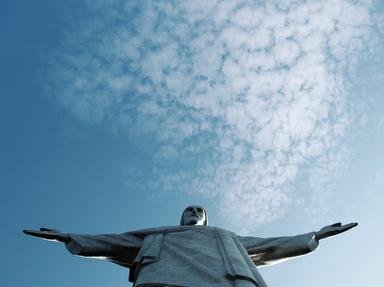Quiz Answer Key and Fun Facts
1. What war was going on in Mexico when the United States first intervened there in the 20th century?
2. What incident, related to the Ypiranga Incident, was the first battle between United States forces and Mexican troops during the US intervention in Mexico in the 1900s?
3. In which country did the United States lead a coup d'etat in 1954, deposing the then President?
4. In 1965 the United States occupied one of these Latin American countries for the second time in the 20th century. Which of these was it?
5. Which Caribbean country, at the time undergoing various changes of leadership and conflicts, did the United States invade in 1983?
6. Which manmade structure, worked on by two different countries before the US finished it in 1914, was an indirect cause for a US invasion of the Latin American country it belonged to, exactly 75 years later?
7. In the case of the 1989 invasion of Panama, was there ever an official declaration of war between Panama and the United States?
8. Relationships, mainly economic, between Cuba and the United States had roots that ran deep, going back to before the American Revolutionary War. As a result, when Cuba attempted to break from Spanish rule in the late 19th century, the Cubans looked quite naturally looked to the United States for help. Which war, viewed by some as the American intervention for Cuba, ensued?
9. The United States' intervention in Cuban affairs did not end with Cuban Independence. After Cuba changed governments in 1959, the United States began once again concerning itself in another country's causes. Tension mounted, causing which major incident, in which Cuba was invaded by a CIA trained army?
10. When Haiti saw the arrival of United States in 1915, how many presidents had the country gone through within a period of four years?
Source: Author
Mariamir
This quiz was reviewed by FunTrivia editor
bloomsby before going online.
Any errors found in FunTrivia content are routinely corrected through our feedback system.
